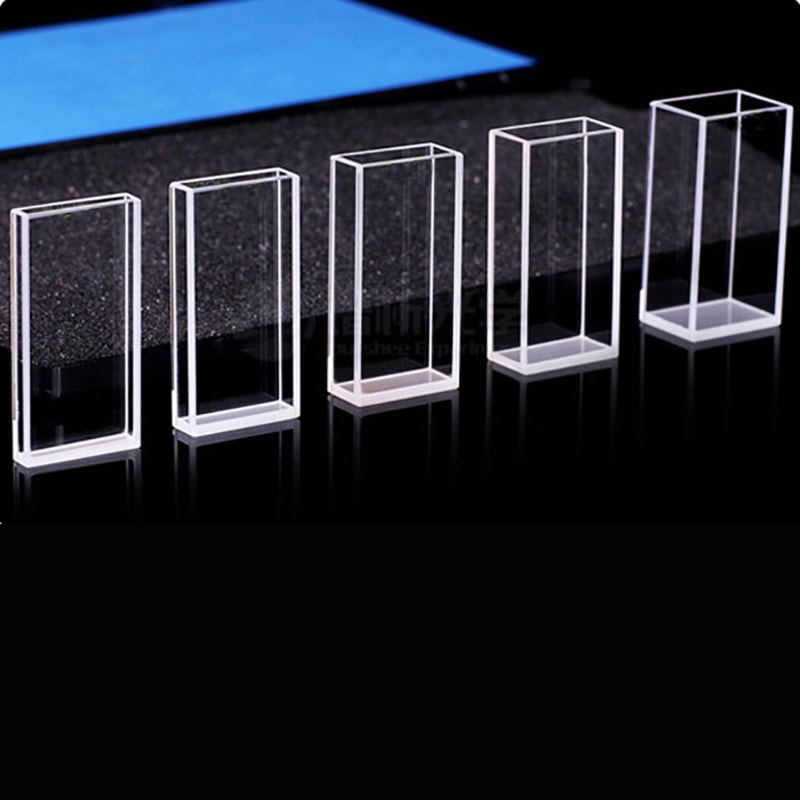The spectrophotometry method is a base of scientific discovery. It unravels the mysteries of light absorption and transmission across particular wavelengths. Cuvettes are the vessels at the center, which houses the samples that are to be studied. Although they may appear straightforward but their intricate structure including the length of the path to the choice of material which is the key to obtaining accurate information about the concentration of substances and quality. Let’s get into this fascinating universe where cuvette dimensions and size determine the outcome of every test.
Power of Cuvette Path length
Imagine a beam of light traversing a sample. What happens depends heavily on the length of the cuvette’s path or the distance at which light travels through the liquid. Many labs use an ordinary cuvette with one centimeter of path. This is the ideal solution to balance sensitivity and practicality. What’s the reason? The longer the length of the light path will be, the more of light that is absorbed. Therefore, the light signal is amplified in weak samples. A shorter path can make an enormous difference in high concentration solutions like proteins or nucleic acid. It decreases the requirement for dilution, while also preserving precious samples and cutting down on preparation time. What’s the most important lesson to take away from this? Matching the the path length with requirements for samples is not obvious and increases reliability.

Image credit: cuvet.co
Cuvette Size and Dimensions: More Than Meets the Eye
It’s not only about the amount of liquid that will fit inside the vessel, it’s as well about how it interacts with the spectrophotometer. Cuvettes are available in a variety of volumes and shapes and are each designed to meet specific needs. Semi-micro cuvettes are smaller in size but have more robust walls. They are ideal for samples with small volumes. Thicker walls let light pass through the sample, and without wasting one drop. This is an enormous improvement over a conventional cuvette: it requires smaller steps to pipette, offers less room for error and delivers results that are reliable. This is an innovative tweak that demonstrates size isn’t just an amount of numbers, it’s also a crucial factor.
The 1cm Length of the Path Cuvette The 1 cm Path Length Cuvette is a lab favorite
Why does the 1 cm path length cuvette reign supreme in so many experiments? It is ideal to measure biological parameters when samples are scarce and milliliters are a lot. This design is a classic and provides the same absorbance measurement without overloading the detector. It’s not the one that is universally applicable. Swap it for one with different length of path or the same geometry as one used for studies on emission and the results could skew in a wide range. Selecting the right instrument is essential, do not use only the one that you are familiar with. An instrument that’s not matched to a cuvette which isn’t well-matched.
Material Matters: More than Size and Path
Cuvette size is just one aspect of the issue. Materials selection makes a difference. High transmission rates of glass and quartz cuvettes permit light to flow through without interference. They’re durable as well as reusable and suitable for spectroscopy. On the flip side plastic cuvettes can bring value and convenience to the table. There is no need for clean-up or cross-contamination. Just use the cuvettes then throw them away. They are ideal for quick aqueous tests, or DNA/RNA tests. What’s the trade-off? lower accuracy for certain wavelengths. For those who are a purist, quartz is preferred, while pragmatists may prefer plastic.
Perfect Practice and Precision
Cuvettes’ flexibility is what makes them attractive. With spacers, narrow paths are able for handling concentrated samples. The larger vessels are better suited for bulkier volumes. Every choice of size and length as well as the type of material has an effect on the test. This could affect the accuracy of the outcome. Labs are measuring an uncommon, protein. A semi-micro cuvette that is a little shorter can avoid dilution headaches and deliver precise results in a short time. If you compare it to an unwise cuvette swap during the experiment and you see results that are not as clear, it’s no wonder. This is a great reminder that the smallest small details can have a huge impact on the spectrophotometry.
Cuvettes are tiny but play a big role. Cuvettes are available in a wide range of sizes including the cuvette that has one centimeter length to custom-made. They can bridge the gap between the sample and the insight. The right cuvette could transform an excellent measurement, regardless of regardless of whether you’re chasing purity or concentration and precision, into a fantastic measurement.